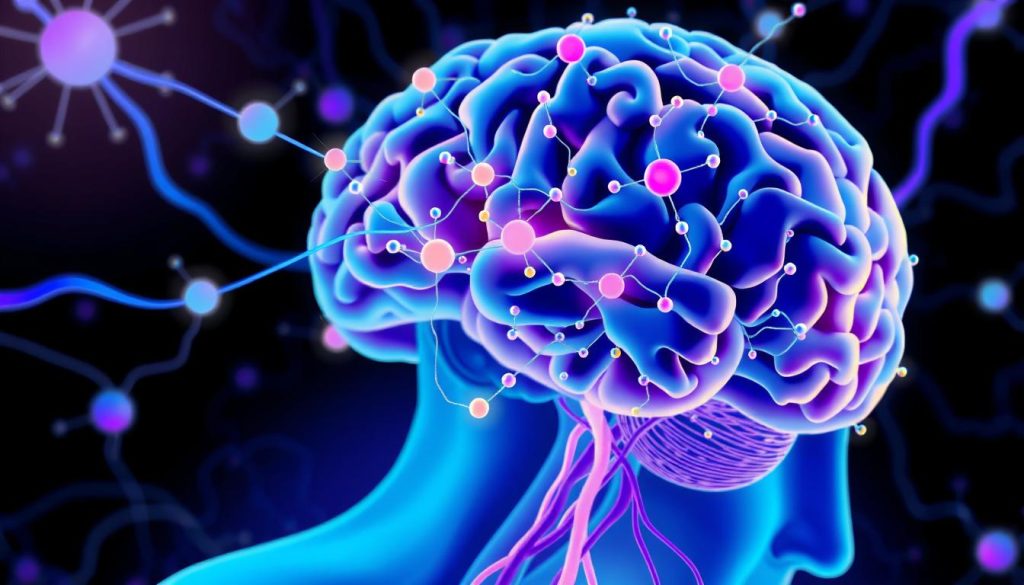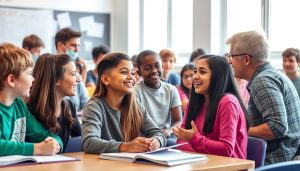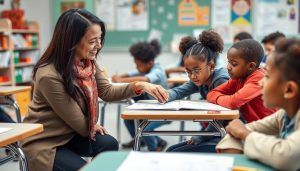This guide explores how you can apply neuroscience concepts in practical, accessible ways to enhance your teaching practice. You don’t need a PhD in neurobiology to implement these strategies—just a willingness to understand some fundamental brain processes and how they impact learning. By the end of this article, you’ll have a toolkit of brain-based teaching approaches that can help you connect with students more effectively and create more engaging, memorable learning experiences.
Understanding Brain Plasticity: The Foundation for Using Neuroscience to Support Learning
At the heart of using neuroscience to support learning is the concept of neuroplasticity—the brain’s remarkable ability to reorganize itself by forming new neural connections throughout life. This means that our brains are constantly changing in response to experiences, environment, and learning. For teachers, this concept is revolutionary because it confirms what many have intuitively known: every student has the capacity to learn and grow, regardless of past performance or challenges.
Neuroplasticity works through a process often summarized as “neurons that fire together, wire together.” When students engage with material in meaningful ways, the neural pathways associated with that learning strengthen. Conversely, neural connections that aren’t used regularly weaken over time—explaining why information that isn’t reviewed or applied tends to be forgotten.
Research by Draganski et al. (2004) demonstrated that even adult brains show structural changes in response to learning. Their study revealed that learning a new skill like juggling actually increased gray matter in areas of the brain associated with visual and motor activity. For educators, this reinforces the importance of creating learning experiences that actively engage students and provide opportunities for practice and application.
Implementing this knowledge in the classroom means designing learning experiences that:
- Provide multiple exposures to key concepts over time (spaced repetition)
- Engage different sensory pathways simultaneously
- Create emotional connections to learning material
- Offer opportunities for students to apply knowledge in different contexts
These approaches leverage the brain’s natural plasticity to create stronger, more durable learning. Developing these teacher skills requires understanding not just what to teach, but how the brain best receives and processes new information. Professional development resources can help you deepen your understanding of neuroplasticity and how to apply it effectively in your classroom.
Memory Formation and Retention: Key Insights for Using Neuroscience to Support Learning
Memory isn’t a single process but rather a complex system involving different types of memory that form and operate in distinct ways. Understanding these processes is crucial for teachers looking to enhance their teacher skills through neuroscience applications. The three primary stages of memory formation—encoding, storage, and retrieval—each present opportunities for teachers to optimize learning experiences.
Encoding: Making Information Stick
Encoding is the initial process of transforming sensory information into a form that can be stored in memory. Research in neuroscience has revealed several factors that enhance encoding:
Attention
The brain can’t effectively encode information without focused attention. When students are distracted or overwhelmed, encoding suffers. Creating learning environments that minimize distractions and help students focus on one concept at a time significantly improves memory formation.
Meaning and Relevance
Information connected to existing knowledge or personal experience activates more neural networks and encodes more strongly. When teaching new concepts, explicitly connecting them to students’ prior knowledge or real-world applications enhances encoding.
Storage: Consolidating Learning
Once information is encoded, it must be consolidated for long-term storage. Neuroscience research has identified several key factors in this process:
Sleep
During sleep, the brain consolidates memories, moving information from short-term to long-term storage. Studies show that students who get adequate sleep retain information better than those who don’t. This highlights the importance of discussing healthy sleep habits with students and parents.
Emotional State
The amygdala, which processes emotions, plays a crucial role in memory formation. Positive emotional states generally enhance learning, while extreme stress can impair memory formation. Creating positive, low-stress learning environments supports better memory consolidation.
Retrieval: Accessing Stored Information
The ability to access stored information is just as important as the initial encoding. Neuroscience research has shown that:
- Each time information is retrieved, it becomes more accessible in the future
- Retrieval practice (testing) is more effective for long-term retention than repeated study
- Spacing retrieval practice over time strengthens memory more than cramming
Enhance Your Understanding of Memory and Learning
Want to deepen your knowledge of how memory works and develop practical teacher skills for your classroom? Explore our comprehensive course on brain-based learning strategies.
Implementing these memory principles in your teaching practice means designing lessons that capture attention, connect to prior knowledge, provide emotional engagement, and incorporate regular retrieval practice. These teacher skills form the foundation of effective brain-based teaching approaches.
The Role of Emotions in Using Neuroscience to Support Learning
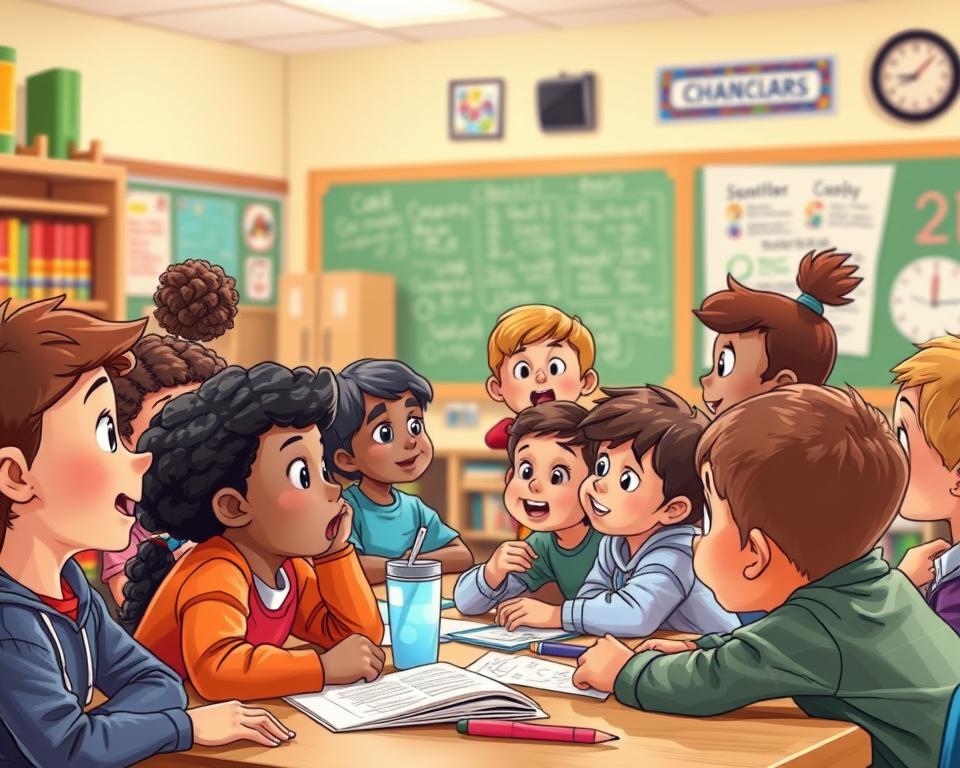
Emotions aren’t just side effects of the learning process—they’re central to how the brain learns, remembers, and makes decisions. Neuroscience research has revealed that the emotional and cognitive systems of the brain are deeply interconnected, with emotional centers like the amygdala having direct connections to areas involved in attention, memory, and decision-making.
According to Immordino-Yang and Damasio (2007), “Learning, attention, memory, decision making, and social functioning are both profoundly affected by and subsumed within the processes of emotion.” This means that emotions act as a gateway for learning—they determine what we pay attention to, what we remember, and how we make meaning from information.
How Emotions Impact Learning
Attention
Emotional content naturally captures and sustains attention. The brain is wired to prioritize emotionally relevant information, which explains why students remember stories and examples with emotional content better than abstract facts.
Memory
Emotional experiences activate the amygdala, which enhances memory formation in the hippocampus. This is why emotionally charged events are typically remembered more vividly and for longer periods than neutral events.
Motivation
Positive emotions like curiosity, interest, and excitement activate the brain’s reward system, releasing dopamine that reinforces learning behaviors and creates a desire to continue engaging with the material.
Creating Emotionally Supportive Learning Environments
Understanding the neuroscience of emotions gives teachers powerful tools for enhancing learning. Here are practical strategies for leveraging emotional engagement:
- Begin lessons with emotionally engaging hooks—surprising facts, compelling questions, or relevant stories
- Use storytelling to present information, as narrative structures naturally engage emotional processing
- Create a classroom atmosphere of psychological safety where students feel comfortable taking risks
- Incorporate positive challenge that creates excitement without triggering excessive stress
- Celebrate progress and help students recognize their growth to build positive associations with learning
The Stress Balance: While positive emotions enhance learning, excessive stress can impair it. When stress is too high, the amygdala can actually inhibit the prefrontal cortex (responsible for higher-order thinking) and hippocampus (crucial for memory formation). Finding the right balance—enough challenge to engage but not so much that it overwhelms—is a critical teacher skill.
Developing teacher skills that incorporate emotional engagement isn’t about entertainment—it’s about understanding the fundamental role emotions play in learning and designing experiences that leverage this connection. By creating emotionally supportive learning environments, teachers can significantly enhance student engagement, memory, and motivation.
Attention and Engagement: Neuroscience Strategies for Using Neuroscience to Support Learning
Attention is the gateway to learning. Without it, information doesn’t even enter the processing stream for potential memory formation. Neuroscience research has revealed that attention isn’t a single process but rather a complex set of neural networks that work together to filter, focus, and sustain concentration on relevant information while suppressing distractions.
The Neuroscience of Attention
The brain’s attention system involves several networks:
- Alerting network: Maintains vigilance and readiness to process information
- Orienting network: Directs attention to specific stimuli
- Executive network: Manages focus, inhibits distractions, and coordinates complex attention tasks
Understanding these networks helps teachers design learning experiences that work with—rather than against—the brain’s natural attention mechanisms. For example, the brain naturally pays attention to novelty, contrast, movement, emotional content, and personal relevance. Incorporating these elements into lessons can significantly enhance student engagement.
Attention Spans and Brain Development
Contrary to popular belief, attention spans aren’t necessarily shrinking—but they are developing differently in the digital age. The prefrontal cortex, which plays a crucial role in sustained attention, doesn’t fully mature until the mid-20s. This means that younger students naturally have more limited capacity for sustained focus and need more support to maintain attention.
Practical Strategies for Enhancing Attention
Chunk Information
Break lessons into 10-15 minute segments for younger students and 20-25 minute segments for older ones, aligning with natural attention cycles. Between segments, use brief activities that allow for mental reset.
Incorporate Movement
Physical activity increases blood flow to the brain and can enhance attention. Simple movement breaks or incorporating movement into lessons (like gallery walks or learning stations) can refresh attention resources.
Use Multisensory Approaches
Engaging multiple sensory pathways simultaneously creates more neural connections and sustains attention longer. Combine visual, auditory, and kinesthetic elements in your teaching.
Teach Metacognition
Help students understand their own attention patterns and develop strategies for noticing when their mind wanders. This metacognitive awareness is a powerful tool for improving focus.
Developing teacher skills related to attention management is particularly important in today’s high-stimulation environment. By understanding the neuroscience of attention, teachers can create learning experiences that naturally capture and sustain student focus, leading to deeper engagement and better learning outcomes.
Looking to enhance your teacher skills in this area? Professional development resources can provide deeper insights into attention mechanisms and practical classroom strategies based on neuroscience research.
Executive Functions: Critical Skills for Learning Success
Executive functions are a set of cognitive processes that enable us to plan, focus attention, remember instructions, juggle multiple tasks, and regulate our behaviors and emotions. These higher-order thinking skills are primarily managed by the prefrontal cortex—the most evolutionarily advanced part of the brain—and they’re essential for academic and life success.
Core Executive Functions
Working Memory
The ability to hold and manipulate information in mind over short periods. This is crucial for following multi-step instructions, mental math, reading comprehension, and making connections between ideas.
Inhibitory Control
The ability to resist distractions, control impulses, and regulate attention. This helps students stay focused, follow rules, and think before acting.
Cognitive Flexibility
The ability to switch perspectives, adjust to new demands, and think creatively. This helps students adapt to changing requirements and consider multiple solutions to problems.
These core functions work together to enable more complex executive skills like planning, organization, time management, metacognition, and self-regulation. Research by Diamond and Lee (2011) shows that executive functions can be improved with practice and are better predictors of academic success than IQ.
Development of Executive Functions
Executive functions develop gradually throughout childhood and adolescence, with different components maturing at different rates. The prefrontal cortex continues developing into the mid-20s, which explains why even teenagers may struggle with impulse control and long-term planning despite having adult-like capabilities in other areas.
This developmental timeline has important implications for teachers:
- Young children need more external support for executive functions (like visual schedules and explicit reminders)
- As students mature, they can gradually take more responsibility for self-regulation
- All students benefit from explicit instruction and practice in executive function skills
Supporting Executive Functions in the Classroom
Structured Environment
Create predictable routines and clear expectations that reduce cognitive load and help students know what to expect. Visual schedules, checklists, and organizational systems provide external support for executive functions.
Explicit Strategy Instruction
Teach specific strategies for organization, time management, and self-monitoring. Model these strategies and provide opportunities for guided practice before expecting independent application.
Scaffolded Challenges
Gradually increase demands on executive functions as students develop capacity. Start with highly structured tasks and slowly reduce scaffolding as students demonstrate readiness for more independence.
Reflection Opportunities
Build in time for students to reflect on their thinking processes, strategies, and progress. This metacognitive practice strengthens executive function pathways in the brain.
Executive Functions and Equity: Students from disadvantaged backgrounds often have fewer opportunities to develop executive functions outside of school due to factors like chronic stress, which can impair prefrontal cortex development. By explicitly teaching and supporting these skills, teachers can help close achievement gaps and provide all students with tools for success.
Developing teacher skills related to executive function support is increasingly recognized as a critical component of effective teaching. By understanding the neuroscience behind these important cognitive processes, teachers can create environments and experiences that help all students develop the executive function skills they need for academic and life success.
Neurodiversity and Differentiation: Personalized Approaches to Learning
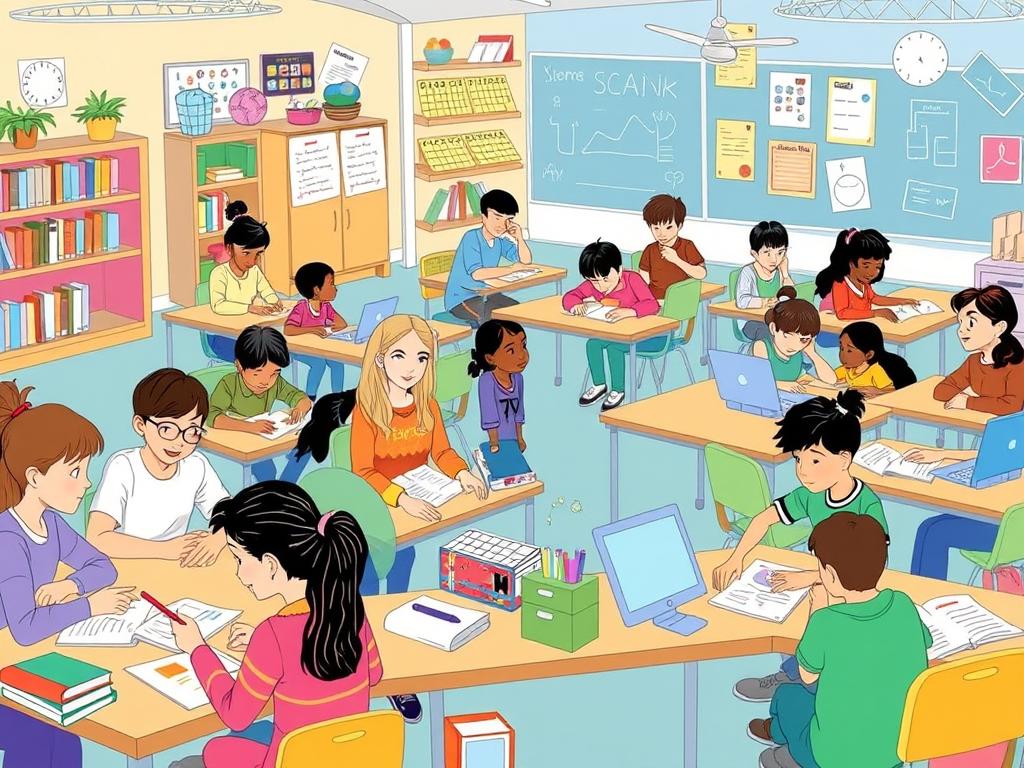
Every brain is unique. While all human brains share the same basic structure and functions, the specific patterns of neural connections—shaped by genetics, experiences, and development—vary tremendously from person to person. This neurological diversity explains why students learn differently and why one-size-fits-all approaches to teaching often fall short.
Understanding Neurodiversity
Neurodiversity refers to the natural variation in human brain function and behavioral traits. This concept recognizes conditions like ADHD, autism spectrum disorders, dyslexia, and other learning differences not as deficits but as natural variations in how brains are wired. Each neurotype brings both challenges and strengths.
Neuroscience research has revealed that:
- Different neural pathways can accomplish the same learning goals
- Strengths in one area often accompany challenges in others
- The brain’s plasticity means that alternative pathways can be developed with appropriate support
Neuroscience-Informed Differentiation
Using neuroscience to support learning means recognizing and accommodating these differences through differentiated instruction. Effective differentiation isn’t about creating entirely separate lessons for each student—it’s about providing multiple pathways to the same learning goals.
Content Differentiation
Adjust the complexity, depth, or focus of what students learn based on their readiness, interests, and learning profiles. This might include tiered assignments, compacting curriculum for advanced learners, or providing additional scaffolding for struggling students.
Process Differentiation
Vary how students learn by offering multiple approaches to exploring content. This could include visual, auditory, and kinesthetic learning activities; collaborative and independent work options; or varying levels of teacher support.
Product Differentiation
Provide options for how students demonstrate their learning. Allow for different formats (written, visual, oral, multimedia) and varying levels of complexity based on student readiness and strengths.
Neuroscience Principles for Inclusive Classrooms
Several key neuroscience principles can guide differentiation efforts:
Multiple Means of Representation
Present information in various formats (visual, auditory, tactile) to engage different neural networks and provide multiple pathways to understanding. This approach benefits all learners but is particularly important for those with specific processing challenges.
Cognitive Load Management
Adjust the amount of information and complexity based on students’ existing knowledge and processing capacity. Breaking complex tasks into manageable steps helps students with executive function challenges but benefits everyone.
Strength-Based Approaches
Identify and leverage students’ cognitive strengths while providing support for areas of challenge. This approach builds confidence and creates positive associations with learning.
Feedback Optimization
Provide specific, timely feedback that guides improvement. The brain learns through error correction, but feedback needs to be delivered in ways that maintain motivation and engagement.
Develop Your Differentiation Skills
Looking to enhance your teacher skills in creating brain-friendly, differentiated learning experiences? Our professional development courses provide practical strategies based on the latest neuroscience research.
Developing teacher skills in neuroscience-informed differentiation requires ongoing learning and practice. By understanding the neurological basis for learning differences, teachers can create more inclusive, effective learning environments that help all students succeed.
The Impact of Stress on Learning: Creating Optimal Conditions
The relationship between stress and learning is complex. Some stress is necessary for alertness and motivation, but excessive stress can significantly impair learning and memory. Understanding this relationship is crucial for teachers seeking to create optimal learning environments.
How Stress Affects the Brain
When we experience stress, the body releases hormones like cortisol and adrenaline that prepare us for a “fight, flight, or freeze” response. In the short term, mild to moderate stress can actually enhance attention and memory formation by increasing alertness and focusing attention on the perceived threat or challenge.
However, prolonged or intense stress has very different effects:
- High cortisol levels can damage the hippocampus, impairing memory formation
- Chronic stress can reduce connectivity in the prefrontal cortex, impairing executive functions
- Stress activates the amygdala, which can override higher-order thinking in favor of emotional reactions
This neurobiological understanding explains why students experiencing high stress—whether from academic pressure, social challenges, or external factors like poverty or trauma—often struggle with attention, memory, and self-regulation in the classroom.
The Stress Curve: Finding the Sweet Spot
The relationship between stress and performance follows what’s known as the Yerkes-Dodson curve—an inverted U-shape that shows how performance improves with some arousal but declines when stress becomes too high. The optimal level of challenge creates what psychologist Mihaly Csikszentmihalyi calls “flow”—a state of focused engagement that’s neither too boring nor too anxiety-provoking.
Creating Brain-Friendly Learning Environments
Understanding the neuroscience of stress gives teachers powerful tools for creating optimal learning conditions:
Predictability and Control
The brain perceives unpredictability and lack of control as threats. Clear routines, expectations, and choices help students feel safe and reduce stress responses. Simple practices like posting daily schedules and providing advance notice of transitions can significantly reduce anxiety.
Relationship Building
Positive relationships with teachers and peers create psychological safety that buffers stress. Taking time to build connections and create a supportive classroom community isn’t just nice—it’s neurologically necessary for optimal learning.
Self-Regulation Support
Teach and model stress management techniques like deep breathing, mindfulness, and positive self-talk. These practices help students develop the neural pathways for emotional regulation that may be underdeveloped due to age or past experiences.
Appropriate Challenge
Design learning experiences that stretch students just beyond their comfort zone while providing adequate support. This “productive struggle” creates optimal arousal for learning without triggering excessive stress responses.
A Note on Trauma: Students who have experienced trauma may have heightened stress responses and require additional support. Trauma-sensitive teaching approaches that emphasize safety, predictability, and relationship-building are essential for these students to engage effectively in learning.
Developing teacher skills related to stress management isn’t just about creating a pleasant classroom atmosphere—it’s about understanding the profound impact of stress on brain function and learning. By creating environments that maintain optimal arousal levels, teachers can help all students access their full cognitive potential.
Want to learn more about creating brain-friendly learning environments? Our brain research course offers in-depth strategies based on neuroscience principles.
Sleep, Nutrition, and Physical Activity: The Physical Foundations of Learning
While much of educational neuroscience focuses on cognitive processes, the brain’s physical needs are equally important for optimal learning. Sleep, nutrition, and physical activity provide the biological foundation for all cognitive functions and have profound effects on attention, memory, and executive functions.
Sleep and Learning
Sleep isn’t just rest for the brain—it’s an active time when the brain processes and consolidates learning. During sleep, the brain:
- Transfers information from short-term to long-term memory
- Strengthens neural connections formed during learning
- Prunes unnecessary connections to enhance efficiency
- Clears waste products that accumulate during waking hours
Research by Saletin and Walker (2012) demonstrates that sleep after learning improves memory retention by up to 40% compared to the same time spent awake. For students, adequate sleep is not a luxury—it’s a biological necessity for learning.
Unfortunately, many students, especially adolescents, are chronically sleep-deprived. Biological changes during puberty shift teenagers’ natural sleep cycle later, yet most schools start early in the morning. This mismatch creates what sleep researchers call “social jetlag” that can significantly impair learning.
Sleep Needs by Age:
Elementary students: 9-12 hours
Middle school students: 8-10 hours
High school students: 8-10 hours
Nutrition and Brain Function
The brain is an energy-intensive organ, consuming about 20% of the body’s calories despite making up only 2% of its weight. The quality and timing of nutrition have direct effects on cognitive function:
Blood Glucose Levels
The brain relies primarily on glucose for energy. Both too little glucose (hypoglycemia) and blood sugar spikes followed by crashes can impair attention and cognitive function. Balanced meals and snacks that include protein, healthy fats, and complex carbohydrates help maintain stable blood sugar levels.
Micronutrients
Specific nutrients like omega-3 fatty acids, iron, zinc, and B vitamins play crucial roles in brain development and function. Deficiencies in these nutrients can affect cognition, behavior, and emotional regulation.
For many students, school meals provide a significant portion of daily nutrition. Advocating for nutritious school food options and educating students about brain-healthy eating are important teacher skills that support learning readiness.
Physical Activity and Cognitive Function
Regular physical activity benefits the brain in multiple ways:
- Increases blood flow to the brain, delivering more oxygen and nutrients
- Stimulates the production of BDNF (brain-derived neurotrophic factor), which supports the growth of new neurons and synapses
- Reduces stress hormones and increases mood-enhancing neurotransmitters
- Improves executive functions, particularly inhibitory control and working memory
Research by Hillman et al. (2014) found that a single 20-minute bout of moderate exercise improved attention and academic performance in children. Regular physical activity has even stronger effects, with some studies showing increases in hippocampal volume and improved cognitive function after consistent exercise programs.
Practical Implications for Teachers
While teachers can’t control students’ sleep habits or home nutrition, they can:
Educate Students
Teach students about how sleep, nutrition, and physical activity affect their brain and learning. Understanding these connections can motivate better health choices.
Incorporate Movement
Integrate physical activity throughout the school day with movement breaks, active learning strategies, and opportunities for physical education and recess.
Advocate for Health-Supporting Policies
Support school policies that align with students’ biological needs, such as later start times for adolescents, adequate time for meals and physical activity, and nutritious food options.
Consider Timing
Schedule cognitively demanding tasks during peak alertness times and provide more support during natural energy dips (like after lunch).
Developing teacher skills that address these physical foundations of learning acknowledges that students are whole beings whose cognitive function is inseparable from their physical wellbeing. By supporting these basic needs, teachers create the conditions for optimal brain function and learning.
Practical Classroom Strategies for Using Neuroscience to Support Learning
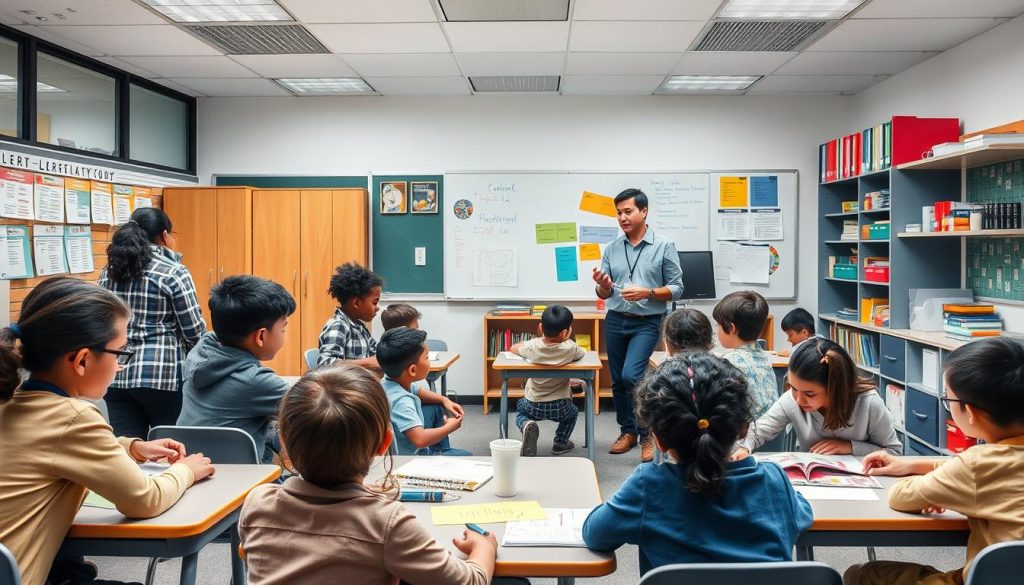
Translating neuroscience concepts into everyday teaching practices doesn’t require specialized equipment or radical changes to your classroom. Small, intentional adjustments based on how the brain learns can have powerful effects on student engagement and achievement. Here are practical strategies you can implement immediately:
Attention and Engagement Strategies
Brain Breaks
Incorporate short (2-3 minute) movement or mindfulness activities between learning segments to refresh attention resources. Simple activities like stretching, quick games, or breathing exercises can reset the brain’s attention systems.
Novelty and Surprise
The brain naturally attends to unexpected or novel stimuli. Vary your presentation methods, incorporate surprising facts or demonstrations, and create curiosity through thought-provoking questions to capture attention.
Memory Enhancement Strategies
Retrieval Practice
Instead of simply reviewing material, have students actively retrieve information through low-stakes quizzes, brain dumps, or teach-back activities. This strengthens neural pathways more effectively than passive review.
Spaced Repetition
Distribute practice over time rather than massing it into a single session. Revisit key concepts days and weeks after initial learning, gradually increasing the intervals between reviews.
Elaboration
Have students explain concepts in their own words, connect ideas to prior knowledge, or apply learning to new contexts. This deeper processing creates stronger, more extensive neural networks.
Dual Coding
Combine verbal and visual information to engage multiple processing systems in the brain. Use diagrams, mind maps, or student-created visuals alongside verbal explanations.
Emotional Engagement Strategies
Storytelling
Frame content within narratives that create emotional connections. Stories activate more areas of the brain than factual information alone and create hooks for memory.
Personal Relevance
Help students see how learning connects to their lives, interests, or future goals. This activates reward circuitry in the brain and enhances motivation.
Executive Function Support Strategies
Visual Organizers
Provide graphic organizers, checklists, and visual schedules to support working memory and planning. These external supports reduce cognitive load and help students focus on content rather than procedures.
Strategy Instruction
Explicitly teach and model learning strategies like note-taking, summarizing, and self-monitoring. Make the invisible processes of effective learning visible to students.
How do I know which strategies will work best for my students?
The most effective approach is to use a variety of strategies and observe which ones engage your particular students. Different brains respond differently to various approaches, so diversifying your methods increases the likelihood of reaching all learners. Pay attention to when students seem most engaged and when they struggle, and adjust accordingly.
Do I need to completely change my teaching approach?
Not at all. Many teachers are already using brain-friendly strategies intuitively. The goal is to become more intentional about these practices and understand why they work. Start by incorporating one or two new strategies at a time, observe the results, and gradually build your repertoire of brain-based teaching approaches.
How do I balance these strategies with curriculum requirements?
Brain-based teaching strategies aren’t additions to the curriculum—they’re methods for teaching the existing curriculum more effectively. By aligning your teaching approaches with how the brain naturally learns, you can actually cover required content more efficiently because students learn and retain information better.
Developing teacher skills in brain-based instructional strategies is an ongoing process of learning, experimentation, and reflection. As you implement these approaches, pay attention to what works with your specific students and context, and continue refining your practice.
Ready to Deepen Your Understanding?
Enhance your teacher skills with our comprehensive course on using brain research to improve learning. Gain practical strategies based on the latest neuroscience findings that you can implement in your classroom immediately.
Professional Development: Enhancing Teacher Skills Through Neuroscience
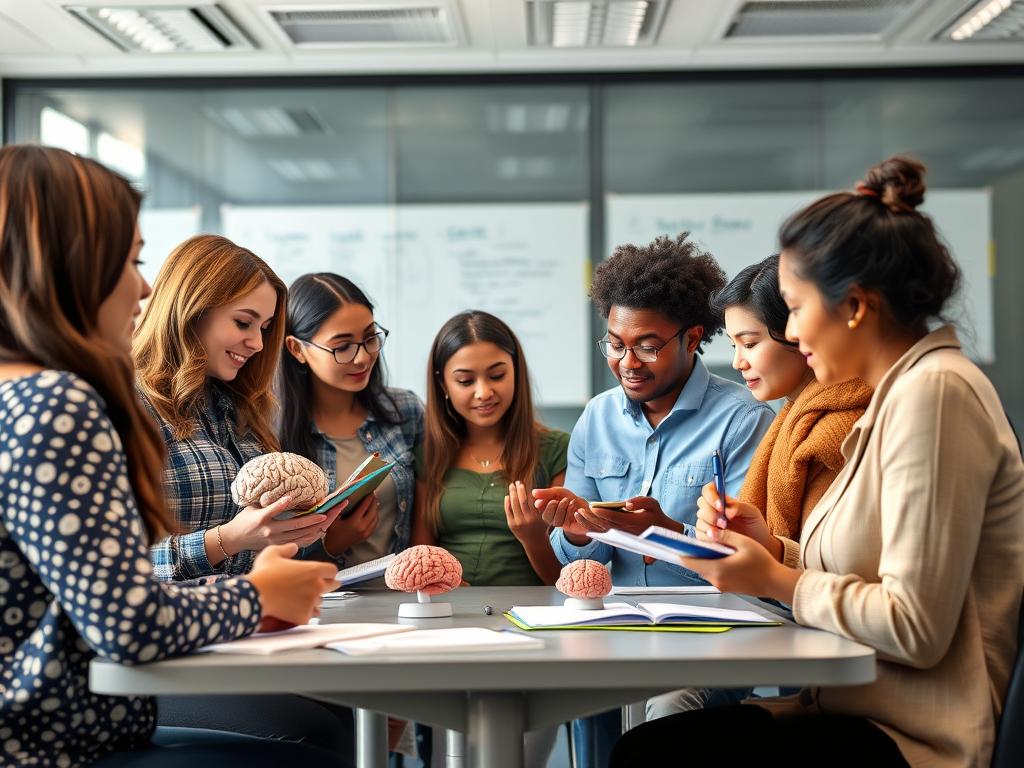
As our understanding of the brain and learning continues to evolve, ongoing professional development becomes increasingly important for teachers. Developing teacher skills in educational neuroscience not only enhances your effectiveness in the classroom but also revitalizes your passion for teaching by providing new insights and approaches.
Why Neuroscience Professional Development Matters
Professional development focused on educational neuroscience offers several unique benefits:
- Provides scientific validation for effective teaching practices you may already be using intuitively
- Helps you distinguish between evidence-based approaches and “neuromyths” that can mislead educational practice
- Offers new perspectives on learning challenges and potential interventions
- Creates a common language for discussing learning processes with colleagues, students, and parents
Research by Dubinsky et al. (2013) found that teachers who participated in neuroscience professional development not only increased their knowledge but also showed greater confidence in their ability to reach all learners and enhanced their classroom practices.
Types of Neuroscience Professional Development
Formal Courses
Structured courses on educational neuroscience provide comprehensive understanding of brain-based learning principles and their classroom applications. These may be offered through universities, educational organizations, or online platforms.
Workshops and Seminars
Shorter, focused sessions on specific neuroscience topics allow you to target particular areas of interest or need. These often include hands-on activities and immediate classroom applications.
Professional Learning Communities
Collaborative groups of educators who study neuroscience concepts together, share implementation strategies, and reflect on results. This approach provides ongoing support and accountability for applying new learning.
Building Your Neuroscience Knowledge Base
Whether through formal professional development or self-directed learning, several key areas of neuroscience knowledge are particularly valuable for teachers:
Brain Development and Plasticity
Understanding how the brain develops and changes throughout childhood and adolescence helps you align expectations and teaching approaches with students’ neurological readiness.
Memory Systems and Learning Processes
Knowledge of how different types of memory work and how information is encoded, stored, and retrieved allows you to design more effective learning experiences.
Attention Networks and Engagement
Understanding the neural basis of attention helps you create learning environments and experiences that naturally capture and sustain student focus.
Social and Emotional Neuroscience
Insights into how the brain processes emotions and social interactions inform approaches to classroom climate, relationships, and social-emotional learning.
From Knowledge to Practice
The ultimate goal of neuroscience professional development is not just to acquire knowledge but to transform your teaching practice. Effective implementation involves:
- Starting small with one or two brain-based strategies and gradually expanding your repertoire
- Collecting evidence of impact through student work, engagement observations, and achievement data
- Reflecting on what works and what doesn’t with your specific students and context
- Sharing insights and strategies with colleagues to build a brain-friendly school culture
Investing in developing your teacher skills through neuroscience education represents a commitment to evidence-based practice and continuous improvement. As you deepen your understanding of how the brain learns, you’ll discover new ways to reach and teach all students more effectively.
Take the Next Step in Your Professional Growth
Ready to enhance your teacher skills with the latest insights from neuroscience? Explore our comprehensive professional development options designed specifically for K-12 educators.
Conclusion: The Future of Using Neuroscience to Support Learning
As we’ve explored throughout this article, using neuroscience to support learning offers powerful insights and strategies for enhancing teaching effectiveness and student outcomes. By understanding the biological foundations of learning—from neuroplasticity and memory formation to attention mechanisms and emotional engagement—teachers can design experiences that work with, rather than against, the brain’s natural learning processes.
The field of educational neuroscience continues to evolve, with new research constantly refining our understanding of how learning happens at the neural level. As this knowledge expands, so too will the opportunities for teachers to apply these insights in their classrooms. The future of education lies in this thoughtful integration of neuroscience and pedagogy—not as a replacement for traditional teaching wisdom, but as a complement that enhances and extends effective practice.
Developing teacher skills in brain-based approaches requires ongoing learning and experimentation. Each classroom and each student brings unique neural patterns and learning needs, and there is no one-size-fits-all application of neuroscience principles. The most effective teachers will be those who combine scientific understanding with careful observation of their specific students, adapting approaches to meet diverse needs.
As you continue your journey of using neuroscience to support learning in your classroom, remember that you don’t need to implement everything at once. Start with one or two strategies that resonate with you and your teaching context. Observe the results, refine your approach, and gradually expand your repertoire of brain-friendly teaching practices. Each step you take toward aligning your teaching with how the brain naturally learns will benefit your students and enhance your effectiveness as an educator.
The brain is indeed the most complex and fascinating learning machine on the planet. By understanding and working with its natural processes, you can create more engaging, effective, and joyful learning experiences for all your students. The journey of connecting neuroscience and education is just beginning, and as a teacher, you are at the forefront of this exciting intersection of science and practice.
Continue Your Learning Journey
Ready to deepen your understanding of how neuroscience can transform your teaching practice? Explore our comprehensive resources and professional development opportunities designed specifically for K-12 educators.

